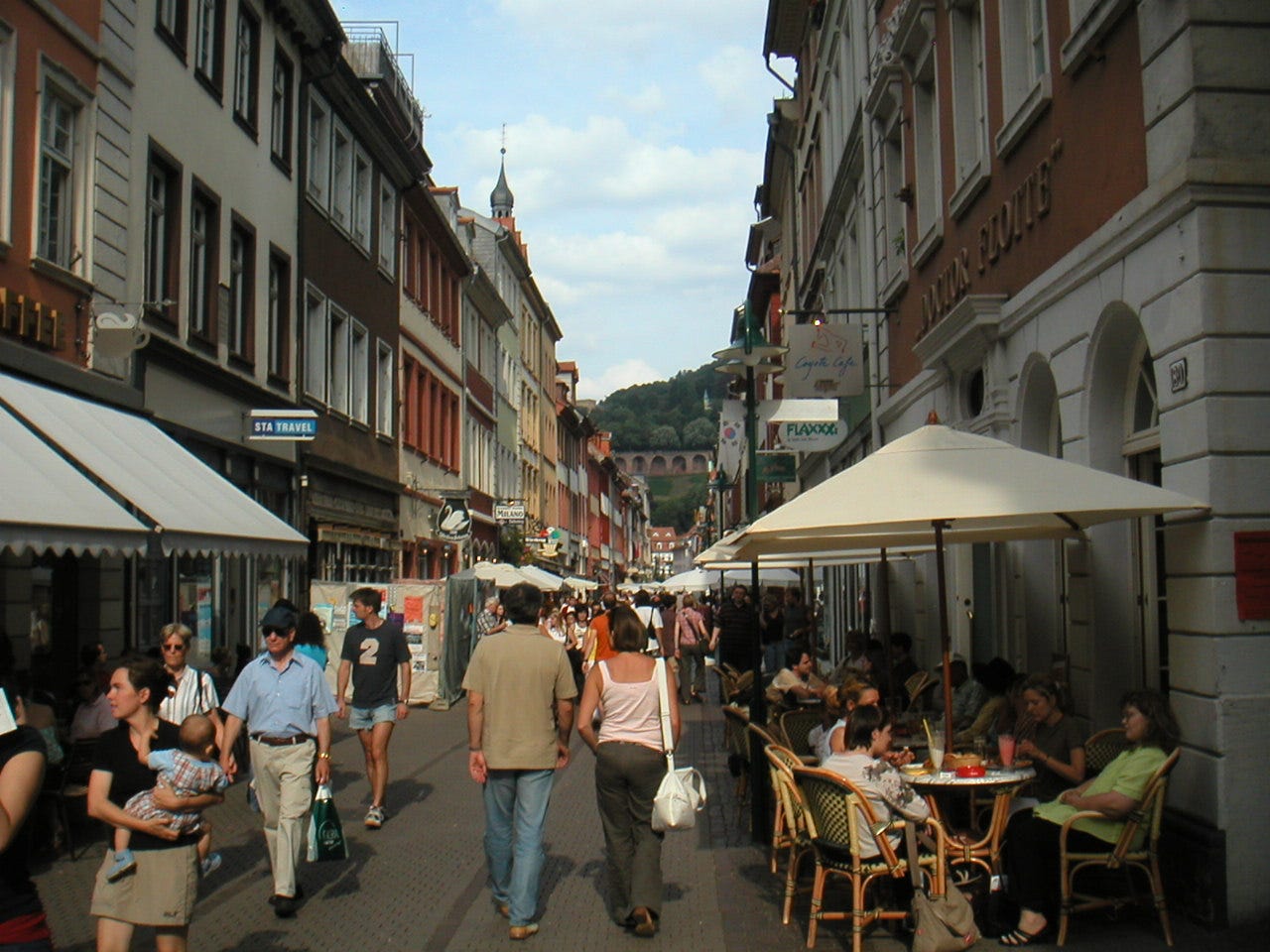Slow Cities, Not "Jetson Jetpacks"
A common “solution” I often hear from friends about solving traffic problems: “If only we had flying cars! Or those “jetpacks” on the Jetson’s TV shows!”
For now, let’s ignore the logistical nightmare and extreme isolation associated with having hundreds of thousands of flying metal boxes whizzing around above our cities. Let’s assume we’ve figured out a way to avoid thousands of crashes each day, and simply consider the implications of such a world on travel time and the design of our world.
A book I just read clearly shows the childish folly of such “solutions." In Slow Cities: Conquering Our Speed Addiction for Health & Sustainability, authors Tranter and Tolley note that speeding up vehicle speeds is conventionally thought to save time, boost our economy, and allow us and our kids to enjoy more activities in life. The authors show that faster vehicle travel does the reverse. Yes, faster vehicles would save us time and allow us to enjoy more activities. But only if nothing in the city changed as a result of the higher speeds. Of course, a large number of negative things happen (such as more urban dispersal, more congestion due to car crashes and induced travel, more traffic signals, etc.) when speeds increase in a city.
Turns out that we save time, have a better economy, and can enjoy more activities when we slow down travel speeds.
The Jetsons future is too silly for words. Impractical on so many levels.
The Tranter and Tolley book is a clarion call for slower travel in cities. Our century-long push for faster motor vehicle speeds has resulted in slower average motorized speeds today than a century ago. The average vehicle speed is now about 6 mph, I believe. In addition, we now spend more time traveling each day.
This is after we spent countless trillions of public dollars to destroy our cities with highways and overpasses and building removal and parking lot creation.
Why has daily travel time increased?
Because when we obsessively tried to speed up cars for a century, we forgot that doing so will inevitably change our cities and our household budget. We wrongly, naively assumed that cities and household budgets will stay the same when we build better comfort and speed machines (cars).
The inevitable result of our doing what we did to speed cars is that our destinations get further and further apart (if shops and homes are too close together, it slows cars – so we spread destinations apart). Because high-speed cars, the massive highways they need, and the dispersal of homes from destinations make it impossible to walk or bicycle or use transit, our households are forced to work longer and longer hours to make enough money to afford to buy and maintain 2 or 3 or 4 cars per household.
Not to mention the always increasing taxes governments need to service car infrastructure, and the increased cost of goods and services we buy (increased costs because of all the parking needed).
Not to mention all the time parents must now devote to being taxi drivers for kids who cannot get anywhere without a car ride. And not to mention the inevitable congestion that faster cars give us (due to their size, the inevitable car crashes, and the inevitable traffic signals).
The result is that instead of saving us time, which we all assumed would happen if we could drive faster on faster highways, our single-minded effort to speed cars for the past century means that our effective speed is slower, on average, than people bicycling. Keep in mind that this slower effective speed is in cars that can now reach speeds well over 100 mph compared to the Model T, which had a maximum speed which was far lower.
In many nations, walking is now faster than car travel due to all of these costs.
In all nations where fast car travel has been emphasized, far more time each day is devoted to travel than in nations that emphasize walking, bicycling, and transit. This despite the fact that motor vehicles today are capable of far faster speeds than walking or bicycling or horse-drawn carriages or buses. We all thought faster cars would save time and give us more things we could enjoy doing. But we tragically emphasized mobility, rather than accessibility. And we continue to do that to this day.
The counterintuitive paradox: If we want to spend less time traveling each day, have less need to work longer hours, have less need to spend time being taxi drivers for our kids, have more time for leisure, and have the ability to reach more things we enjoy doing, we need to emphasize “slow” travel (walking, bicycling, transit).
The “Jetsons jetpacks” my friends dream about deliver, I’m afraid, the “faster” vehicles that will make us busier, more stressed, more broke, and less healthy.
And we would spend vastly more time each day in travel.
In sum, I’m thrilled we don’t have “jetpacks” today.





